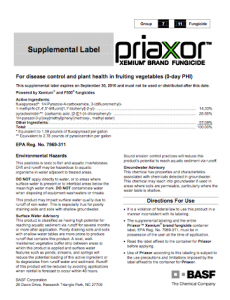Managed sod row middles have many advantages, and have been adopted by many tree fruit growers. A perennial fescue sod does not attract insects pests, is not an alternate host for harmful nematodes, and provides shelter for beneficial insects. The sod provides a firm drive path for spring spraying of insecticides and fungicides, prevent or reduce soil erosion, and improve soil tilth by increasing soil organic matter. Control broadleaf weeds in the sod to eliminate bloom in the orchard throughout the spring and summer, which will attract beneficial pollinators into the orchard when the trees are not in bloom and insecticides are being applied. Control weeds in the sod in early spring or in the fall after harvest. [Read more…]
Archives for March 2013
Exemptions – FDA Proposed Produce Food Safety Rule Q & A
The first FDA Proposed Produce Food Safety Rule Q & A conference call, coordinated by the Produce Safety Alliance, was held yesterday. This conference call focused on exemptions to the proposed rule. Here are the highlights of yesterday’s conference call:
- How are average annual sales for a farm calculated?
- Farm Facility (Packinghouse) Registration, are farms exempt?
- At what point does the FDA Preventative Controls rule apply to a farm?
- Are there any exemptions to the labeling of product to be sold? [Read more…]
New Supplemental Label for Priaxor
Priaxor: For disease control and plant health in fruiting vegetables (0-day PHI).
Seed treatments and selected fungicides and bactericides for the GH
All seed used in transplant production, as well as, any transplants brought into the greenhouse should be certified ‘clean’ or disease-free. Important diseases such as Bacterial leaf spot of tomato and pepper can cause major problems in transplant production if introduced in the greenhouse. [Read more…]
Pathogens that Cause Damping-off
Damping-off is caused by a number of important vegetable pathogens and is very common during the spring. Damping-off can kill seedlings before they break the soil line (pre-emergent damping-off) or kill seedlings soon after they emerge (post-emergent damping-off). Common pathogens that cause damping-off include Pythium, Phytophthora, Rhizoctonia and Fusarium spp. [Read more…]
The Ides of March
I apologize for teasing you with a single post, then ignoring the blog site for three weeks. We didn’t mean to invite you all to a party and then not serve up any green beers! [Read more…]

